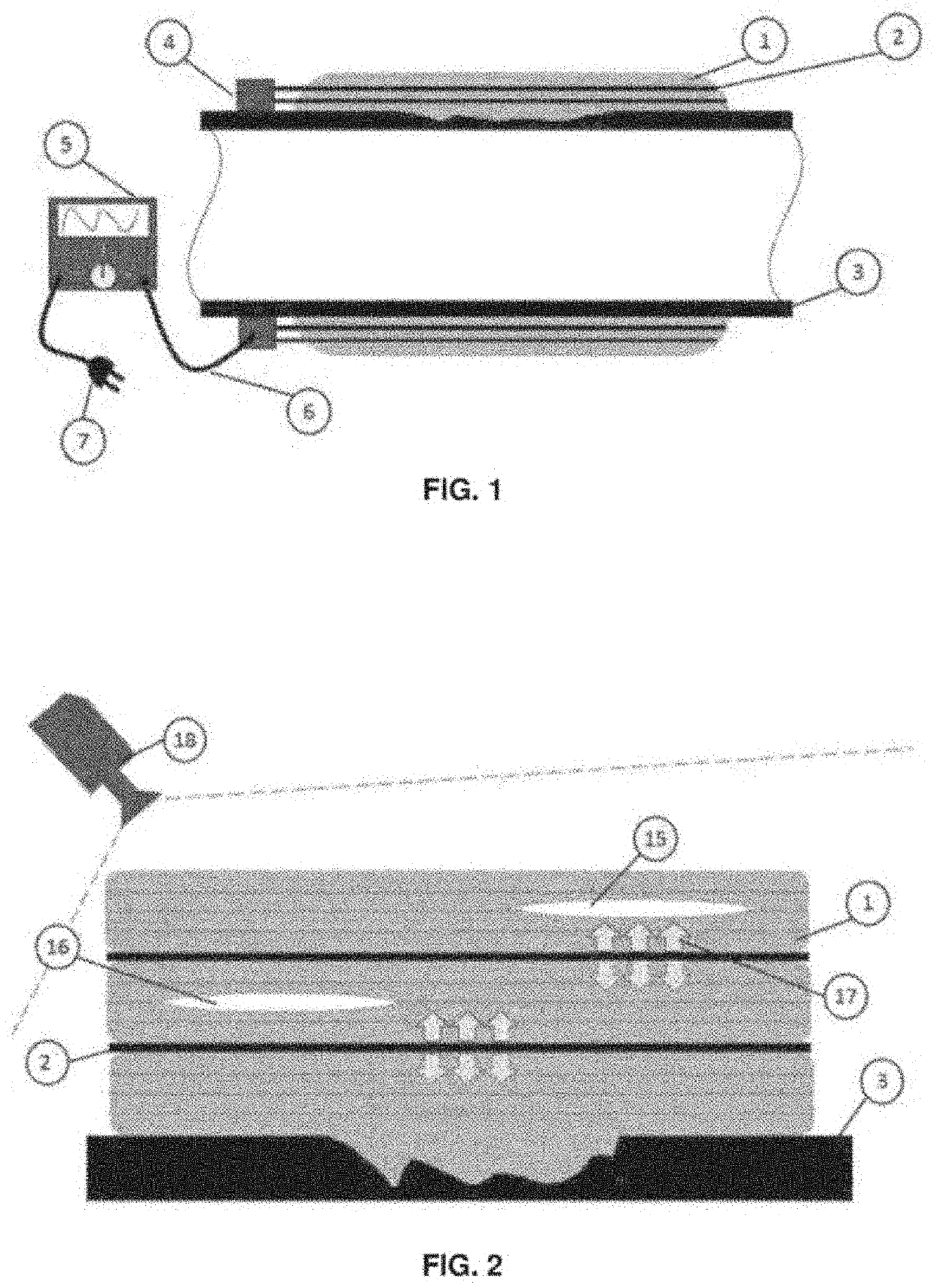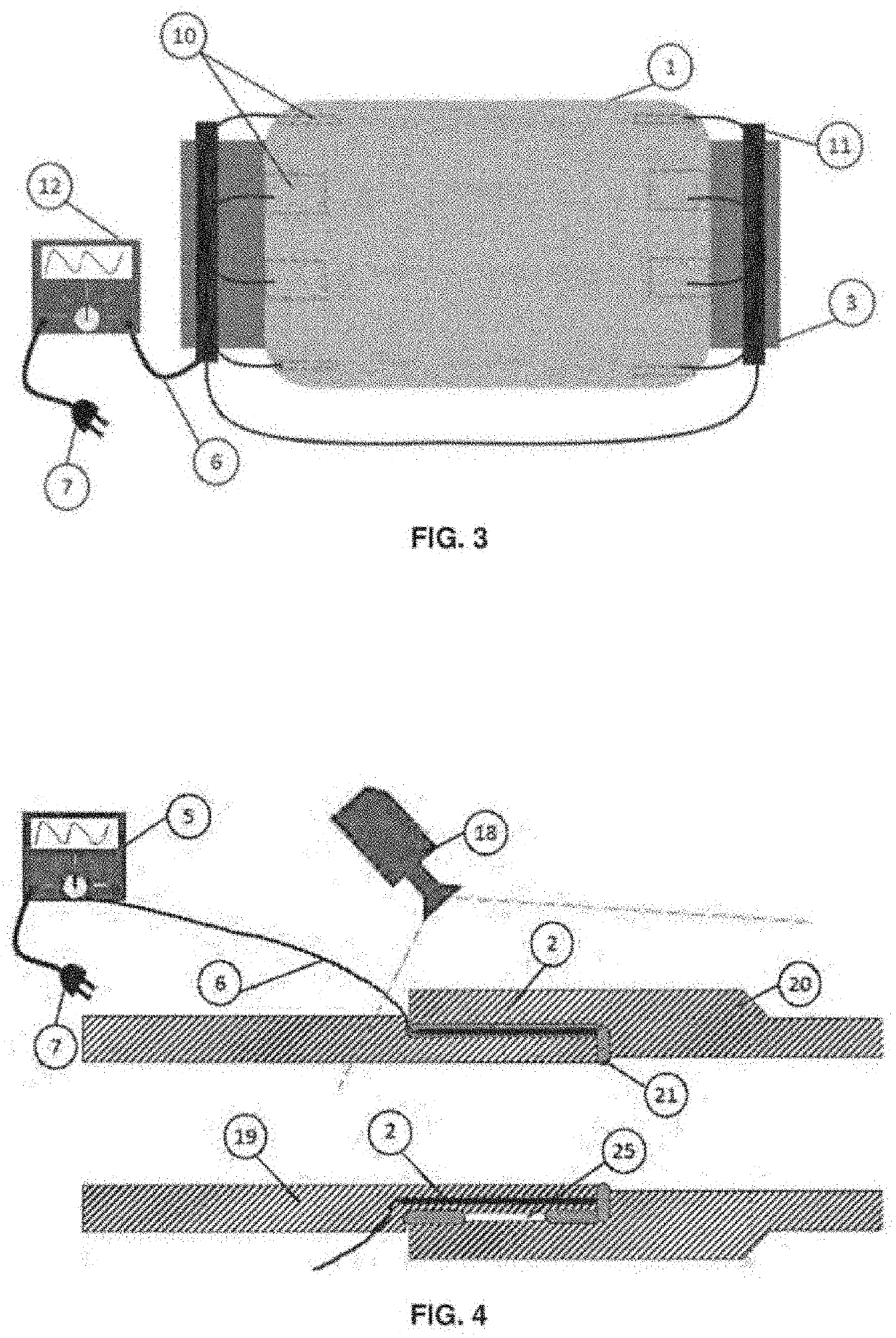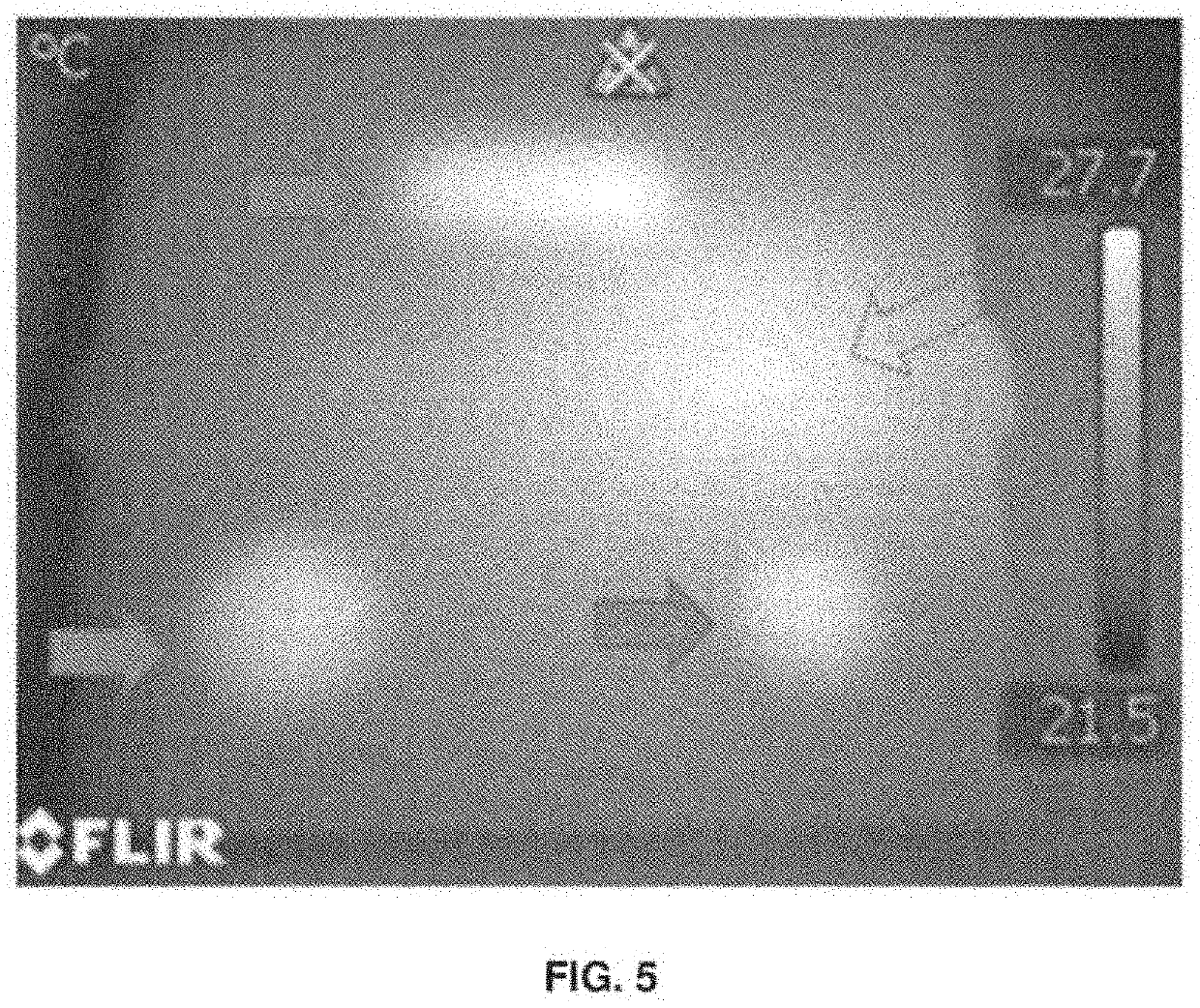System for inspecting a repair or joint consisting of a composite material applied to a structure
a composite material and repair technology, applied in the field of composite material inspection systems, can solve the problems of composite material failure, composite material failure, and higher probability of defects, and achieve the effect of low cost and very effectiv
- Summary
- Abstract
- Description
- Claims
- Application Information
AI Technical Summary
Benefits of technology
Problems solved by technology
Method used
Image
Examples
Embodiment Construction
[0023]First, please note that the following description will begin with the preferred realization of the invention. As will be evident to anyone skilled in the matter, however, the invention is not limited to this particular realization.
[0024]The system for inspecting a repair or joint made of composite material applied to a structure, according to this invention, comprises at least one exciter or element that is excitable to a thermal and / or vibrational stimulus, in which the at least one exciter or excitable element is integrated in the repair or joint.
[0025]FIG. 1 shows a cross schematic view of a first realization of the system of this invention in a composite repair 1 in a pipe 3. In this first realization, applied to a composite repair 1, the excitable element is at least one layer of a material that is excitable to a thermal and / or vibrational stimulus. More preferably, this layer that is excitable to a thermal and / or vibrational stimulus is a carbon fiber layer 2.
[0026]Depen...
PUM
| Property | Measurement | Unit |
|---|---|---|
| vibrational stimulus | aaaaa | aaaaa |
| frequency | aaaaa | aaaaa |
| thermal | aaaaa | aaaaa |
Abstract
Description
Claims
Application Information
 Login to View More
Login to View More - R&D
- Intellectual Property
- Life Sciences
- Materials
- Tech Scout
- Unparalleled Data Quality
- Higher Quality Content
- 60% Fewer Hallucinations
Browse by: Latest US Patents, China's latest patents, Technical Efficacy Thesaurus, Application Domain, Technology Topic, Popular Technical Reports.
© 2025 PatSnap. All rights reserved.Legal|Privacy policy|Modern Slavery Act Transparency Statement|Sitemap|About US| Contact US: help@patsnap.com



